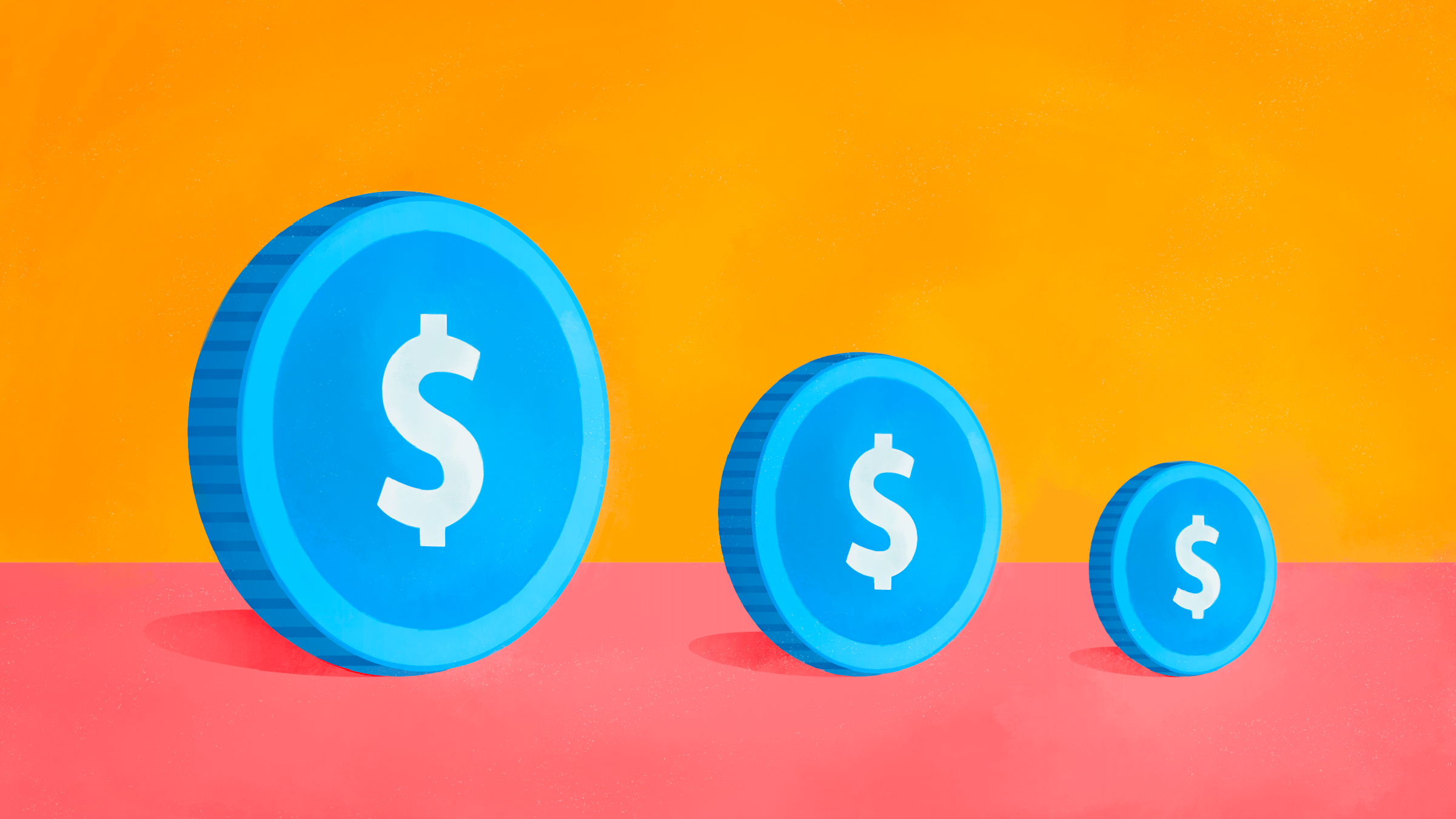UK government bond yields had already started to adjust downwards in advance of the Bank of England’s first rate cut since 2020 on August 1. This has significant implications for bond investors because expected income has fallen – and will continue to fall – as new bonds are issued with lower coupon yields.
Does this mean investors should now look elsewhere for income? Not necessarily.
The first question a bond investor should ask is whether a bond still offers a “real yield.” This means the income received is in excess of inflation. UK inflation rose by 2.2% in July and the benchmark 10-year gilt currently yields nearly 3.85%. So the income received is still outpacing increases in the cost of living.
If Rates Fall, So Will Yields
While interest rates are still expected to fall further, policymakers are keen to stress there is no going back to the ultra-low interest rate era of the 2010s onwards.
Rates rose sharply from 0.1% to 5.25% from 2021 to 2023 but are now very unlikely to fall as rapidly. At the Bank of England’s latest meeting, its forecasts were based on interest rates being around 3.5% in the latter half of 2027 – three years away.
Peter Goves, head of developed market debt sovereign research of MFS Investment Management, said in a note on August 1 that the BoE is “not on an urgent path” to neutral rates – when monetary policy is neither restrictive nor expansionary – any time soon.
“We can therefore expect a rather gradual path in policy normalisation pending the data. Overall, this keeps us constructive on gilt yields,” he said.
As a result, a bond investor buying a government bond now has to weigh up two key assumptions: whether inflation will stay on or around the Bank of England’s 2% target and where interest rates are likely to sit over the length – or “maturity” of the bond.
What’s ‘Fixed’ About Fixed Income?
While bond yields and prices fluctuate daily, the coupon (the annual interest rate paid on the bond itself) will remain the same through the life of the bond. This, coupled with lower volatility, is the appealing part of fixed income: predictability. This contrasts markedly with stock dividends, which go up, down, or can be cancelled entirely.
Let’s look at a random bond for sale online on a major investment platform. This is labelled “Treasury 4.75% 07/12/2030.” If inflation is expected to be around 2%, this may look like what economists call a “free lunch”: getting paid 4.75% a year until the end of 2030!
As always, however, there’s a catch, and it’s the price. This bond trades at a premium to its “par value”; this means an investor has to pay over the odds to own it. UK gilts are usually issued with a “par” value of £1, so paying a price below this is profitable and above this isn’t. Attractive yields are available for a range of maturities but, again, these trade at a premium.
An example: an investor buys a two-year bond with a par value of £1 priced at £1.10 with a coupon yield of 4%. For the life of that bond they will get 4% on the £1 invested (NOT 4% on £1.10) and receive back the £1 par value.
Scanning down the list of available gilt yields shows a very wide range of yields, maturities and prices. As these are “secondary” issues, an investor is buying these bonds with miles already on the clock; this means in the case of “Treasury 4.75% 07/12/2030” an investor will get more six years of payments, not the full 10 if the bond was bought at the start.
In a note after the Bank’s rate cut on 1 August, Schroders' macro strategist Marcus Jennings wrote that UK government debt is currently expensive:
“In our view the price of UK government bonds is currently high when compared to the potential profits that could be made from them, and does not currently adequately compensate for the risk taken,” he said.
“However, there could be better opportunities to invest in gilts in the future if market conditions change. It may be worth waiting a little bit longer to see how this unfolds.”
When Price Rises Are a Good Thing
The flipside of falling yields is they lead to higher bond prices, an element of an investor’s capital gains. A bond’s yield moves inversely to price. So high demand for certain types of bonds will push up the price but push down the yield.
The chart above shows what happened to bond prices when the Bank of England hiked rates from 2022 onwards and the recovery this year as yields have softened.
Owning an existing bond with a fixed coupon could be an advantage in this context: the price of the asset goes up but you are still getting the same income stream. A new buyer of the bond will have to pay more for it, however.
Bond returns largely depend on:
• The price paid for the bond at the outset;
• Whether the investor holds the bond to maturity;
• Changes in price during the life of the bond.
What do Yields Yield?
“Yield to maturity” (YTM) is an important concept alongside coupon yield and the quoted yields in financial websites, which change daily. These are similar but not the same thing.
YTM shows the total return expected on a bond if it’s held to maturity. This is lower than the coupon rate if the bond is bought above par. So buying a bond for income is not just a function of regular coupon payments, it involves capital appreciation too.
Is Cash Better for Income?
Cash also has a very poor long-term track record of beating inflation. In terms of “real returns” over long periods, bonds beat cash and equities beat bonds.
If you crave complete capital security, however, cash is safer. It just won’t offer any potential capital appreciation. And a quick glance at the “best buy” tables of savings rates since the August rate cut will show you how quickly providers are hoping to “pass on” the rate cut to savers.
What’s more, there’s no real compensation for falling interest rates eating into your savings income. Cash ISA rates are currently above 4% in the UK, but these are variable, so will track the expected fall in interest rates in the coming years. They may offer above-inflation income, though.
While cash is the safest asset class, the UK government is very unlikely to default on its payments. Even though the UK doesn’t the highest credit rating of nations like Norway, it’s considered one of the lowest risk countries to lend money to.
Is There an Alternative to Buying Bonds Directly?
Bonds are complex products with their own jargon and moving parts. There are a wide range of active and passive fund strategies available to UK income investors who want access to fixed income without the direct exposure.
These have the benefit of diversification – i.e. not all your bonds are in one basket – and in the case of active funds, the manager can adjust the portfolio to take advantage of different opportunities and using a range strategies. They can also buy international government bonds and corporate debt to improve returns.
Bond Funds with a Morningstar Medalist Rating of Gold
• iShares GiltTrak Index – Yield 2.6%• iShares Over 15 Years Gilts Index – Yield 3.6%• Royal London Short Duration Gilts – Yield 3.92%• Vanguard UK Long Duration Gilt Index – Yield 3.76%
What are the Risks of Buying Bonds for Income?
Falling yields is one obvious issue – particularly as rates start to fall. A connected factor is something called quantitative tightening, which is the flipside of quantitative easing.
In the low-interest rate era, the Bank of England was a buyer of government bonds, pushing prices up and keeping yields down – effectively to keep money cheaper as a stimulant to the economy. Now the Bank is a seller of gilts and this is likely to weigh on prices as more debt is sold off. While the new UK government has warned taxpayers to expect price rises, it may end up issuing more debt, and that will reduce bonds' scarcity. The current fashion for retail investors buying government bonds may fade too. That will have implications for prices and yields.
Expecting steadily declining government bond yields is an assumption based on falling interest rates, lower inflation, and on the UK government’s creditworthiness and political stability. But less than two years ago the Truss administration triggered a big spike in government bond yields and a commensurate fall in prices as markets took fright.
Government credit ratings can be downgraded or upgraded and that affects prices and yields. Those buying longer-dated bonds such as the 30-year gilt need to bear in mind that a lot can change in that time, be it exchange rates, economic growth, inflation, interest rates, or even the prime minister themselves!
Read More on UK Government Bonds
• How Top Bond Managers Are Playing the Rate Cut• Want to Buy Government Bonds? Read This First
This is an updated version of an article published in May as part of income week
The author or authors do not own shares in any securities mentioned in this article. Find out about Morningstar's editorial policies.























